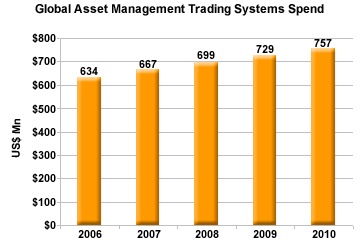Trends in Asset Management Trading Technology
Abstract
Trends in Asset Management Trading Technology
Asset managers and hedge funds grapple with the new and improved trading environment.
What a journey it has been in front office trading over the last five years庸rom automated work flow routines to sophisticated algorithmic trading, from locomotive to bullet train speed, from phone-savvy traders to electronic trader gurus. The latest evolution of execution management systems is reconfiguring traders' desktops, packing in more tools and options. More choices, with vendor introductions from overseas and new product launches, are still afoot. The upside for the asset manager is tremendous since the degree of autonomy is significant and long-awaited. The downside is multiple systems, a change in required skills on the desk, and a rapidly changing environment in market structures and regulation.
Technology and trading divisions of firms are posing questions around near-term and future needs. In a new report, Trends in Asset Management Trading Technology, Celent looks at some of these questions, which include: Do we still need multiple trading systems, or can we consolidate? Do we need an OMS or an EMS, or both? Has our trading vendor kept up with functionality upgrades? Are there newer systems on the market that better align with our anticipated use of multiple asset classes and our organizational structure? Are our vendor contracts in line with prevailing market prices?
However, even with all this change, global spending will grow at a slower pace over the next few years. Prices have declined, and there is some market saturation. A compliment to the wide variety of systems and price points available, vendor consolidation, will likely continue as well as client consolidation. Total global spending by asset managers on trading systems will grow from US$634 million in 2006 to US$757 million by 2010, an average annual growth rate of 4.6%

"Progressive technology vendors will garner greater market share as investment firms seek to streamline costs, work with fewer vendors, and capitalize on functionality upgrades. In the US, firms will look to benefit from vendor consolidations and new product launches with an eye toward streamlining the trading desk." says Denise Valentine, senior Securities & Investments analyst and author of the report. "In Europe and Asia, life on the desk is somewhat more simplified with centralized liquidity venues, larger orders, but less automation overall. Nonetheless, the algorithmic programs, direct market access, and analytics tools are no less valuable, and interest is rising. The next wave of infrastructure change relative to trading technology will occur in these markets."
This report discusses trends in trading technology as well as the typical investment management front office technology framework. Numerous vendors are cited to orient the reader to the popular providers and their orientation.
The 36-page report contains five figures and seven tables. A table of contents is available online.

